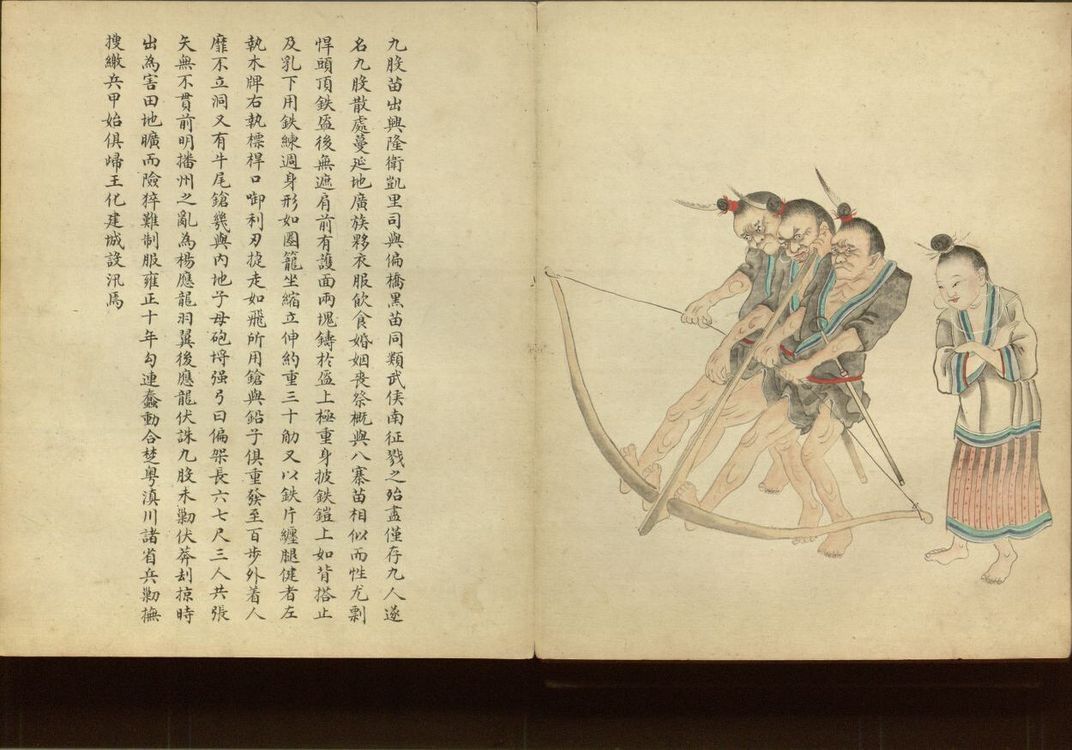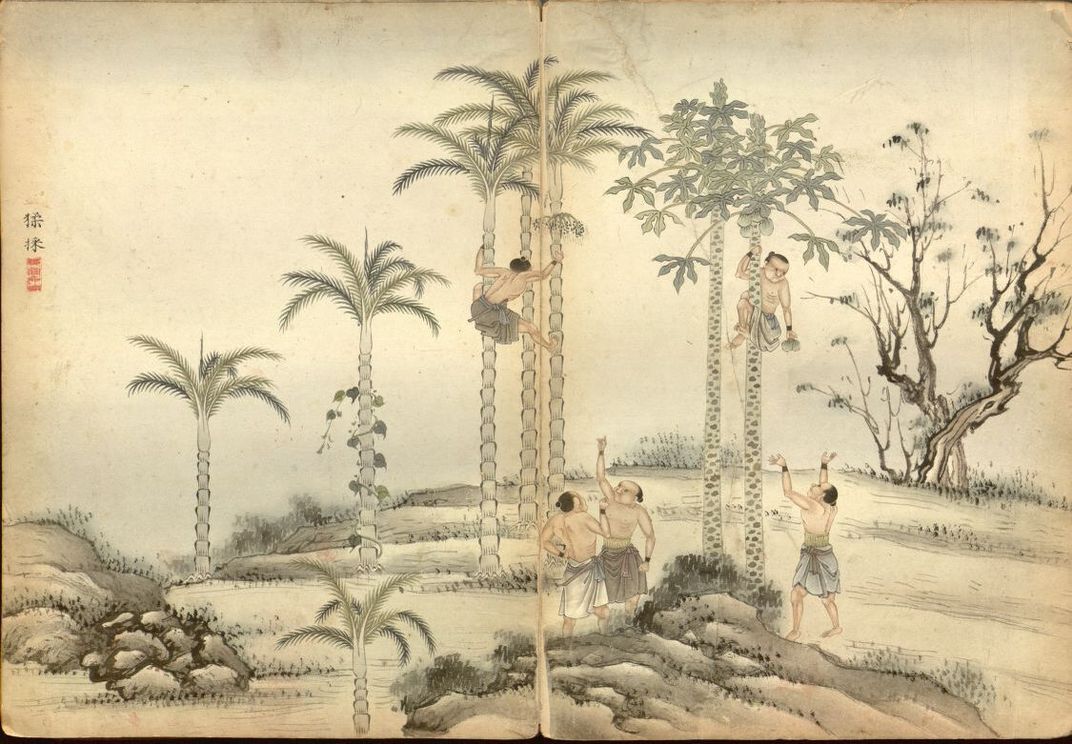Library of Congress Digitizes Taiwanese Watercolors, Rare Chinese Texts
The library’s rare Chinese book collection includes 5,300 titles, 2,000 of which will ultimately be included in the online portal
/https://tf-cmsv2-smithsonianmag-media.s3.amazonaws.com/filer/91/70/9170730c-57e7-4bac-9c78-6e36068b57cc/default_2.jpg)
A woodblock-printed set of 400 illustrations depicting the life and teachings of Gautama Buddha, painted silk scenes by Qing dynasty court artist Jiao Bingzhen, and 12 watercolors detailing indigenous life in Taiwan are among the 1,000 rare Chinese texts now available via the Library of Congress’ online catalogue.
Digitized in honor of Asian Pacific American Heritage month, the trove of books, manuscripts, Buddhist sutras, illustrations and maps represents only a small portion of the LOC’s China-centric holdings. According to a press release, the library’s Asian Division boasts more than 5,300 titles, 2,000 of which will ultimately be featured in the online collection. This initial offering, curated in conjunction with the National Central Library of Taiwan, is limited to 1,000 or so titles, but the LOC notes that “more will be accessible in the future.”
All of the digitized texts—encompassing fields ranging from history to geography, philosophy, literature and classics—date to before 1796, the year after the end of the early Qing period. As the Chinese Rare Book Digital Collection portal explains, the majority of the titles date to the early Qing (spanning 1644 through 1795) or Ming (1368 to 1644) dynasties. Around 30 are even older, tracing their origins to the Song (960 to 1279) and Yuan (1279 to 1368) dynasties.
Some of the titles included in the collection are the only extant copies of their kind, meaning that the average researcher, student or history buff would never be able to study them in-person. The digitization effort, in the words of Qi Qiu, head of Scholarly Services at the Library’s Asian Division, “offer[s] users across the globe unprecedented access to the study of pre-modern China that would otherwise be off-limits due to physical distance or rarity of the items.”
Of particular interest are the watercolors from Taiwan, which center on the aborigines who populated the island prior to the 17th-century arrival of Han settlers from China’s mainland. Atlas Obscura’s Jonathan Carey writes that these individuals, consisting of 16 Austronesian tribes, had lived on the island for more than 6,000 years, but this claim meant little to the conquering Han, who forced the indigenous population to assimilate and give up their lands or face outright violence. Today, just 2 percent of Taiwan’s more than 23 million inhabitants belong to an aboriginal group.
As Duncan DeAeth reports for Taiwan News, the watercolors in question were commissioned by Qing Emperor Qianlong following a 1747 visit by his royal inspector. Although of “little artistic merit,” according to the album’s LOC entry, the 12 paintings offer an intimate glimpse of the islanders’ lives and customs. In some scenes, subjects partake in food-related duties such as picking coconuts, hunting bison and deer, catching fish, cutting and storing grain, and planting taro. In others, the focus is more on the inhabitants of Taiwan: schoolboys engaging in recitation, workers placing the roof on a house, a sentinel on duty and even a child bathing. Overall, the album acts as a helpful “pictoral study of the island before it was transformed into a modern community.”
Other digitized highlights include a 24-volume collection of effective medical remedies, as tested by generations of physicians living during the 14th century and earlier, and a separate set of 48 watercolors featuring the Miao, an ethnic minority native to the mountains of southern China. These paintings, dating to between 1736 and 1820, are accompanied by essays detailing the traditions or events they depict.
/https://tf-cmsv2-smithsonianmag-media.s3.amazonaws.com/accounts/headshot/mellon.png)



/https://tf-cmsv2-smithsonianmag-media.s3.amazonaws.com/accounts/headshot/mellon.png)